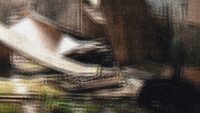Guy Grabowsky (AU)
![Image: Guy Grabowsky, [Untitled], 2020. Courtesy the artist and STATION.](https://photo.org.au/api/wp-content/uploads/2020/02/Promotional-image-200x125.jpg)
Image: Guy Grabowsky, Untitled, 2020. Courtesy the artist and STATION.
Guy Grabowsky is a Melbourne-based artist working with analogue photography. Grabowsky’s interest lies in the photographic medium — all aspects of its evolvement, its role in our shifting realities, how it ‘looks’ at us and how we perceive its usefulness. Grabowsky creates photographs with and without the camera, using unconventional and traditional analogue/digital techniques. Negatives are treated as found objects; the original narrative behind the moment of capture becomes irrelevant. Through intervention and grouping, each image is provided with a new narrative and conceptual framework. The work often tests Grabowsky’s perception of an unstable reality often present in the ubiquitous image. In Grabowsky’s images this ambiguous response continually evolves—the hand is present, causing destruction to reveal a new authenticity, a new Image. Emphasis is placed upon the photograph’s textural surface and the underlying resonances it points to.
Grabowsky graduated with a Bachelor of Fine Arts (Honours) from the Victorian College of the Arts in 2018. He has participated in numerous and solo exhibitions and has been a recipient various prizes, including the Plumm Wine Glass awards (2018), Mount Buller Residency (2017) and the Fiona Myer Award (2017). Selected exhibitions include 1805, Alpine Central, Mount Buller, (2019); Glass Eye, Lon Gallery, Melbourne (2019); Image Reader, Centre of Contemporary Photography, Melbourne (2019); Develop, Monash Gallery of Art, Melbourne (2019); Beyond the Veil, Blindside Gallery, Melbourne (2018); Untitled Spaces, Kings Artist-Run, Melbourne (2018); “Yet Another Image”, Bus Projects, Melbourne (2018); Transit, Seventh Gallery, Melbourne (2017); past/present, Trocadero Art Space, Melbourne (2017); Majlis Travelling Scholarship, Margaret Lawrence Gallery, Melbourne (2017). Grabowsky’s work is held in numerous private and public collections in Australia including the Joyce Nissan, Myer Family Collection and Melbourne University George Paton collection.

![Disintegrated Surface Image: Guy Grabowsky, [Disintegrated Surface], 2018. Courtesy the artist and STATION.](https://photo.org.au/api/wp-content/uploads/2020/02/Disintegrated-Surface-200x135.jpg)